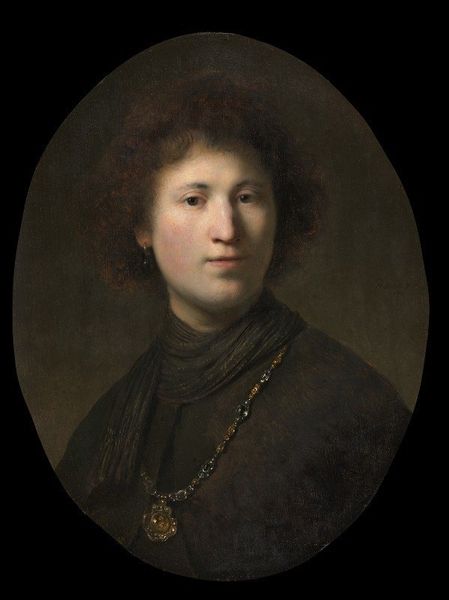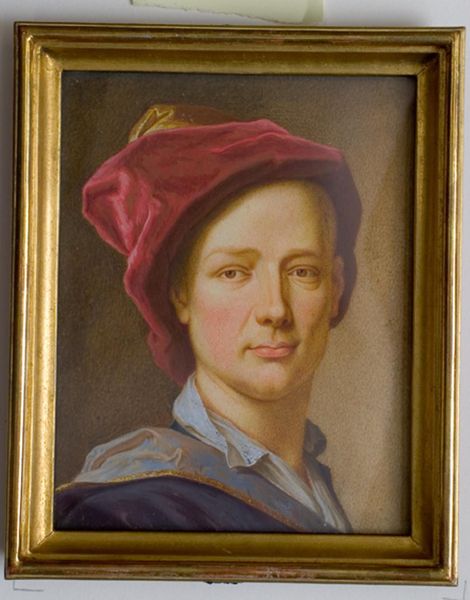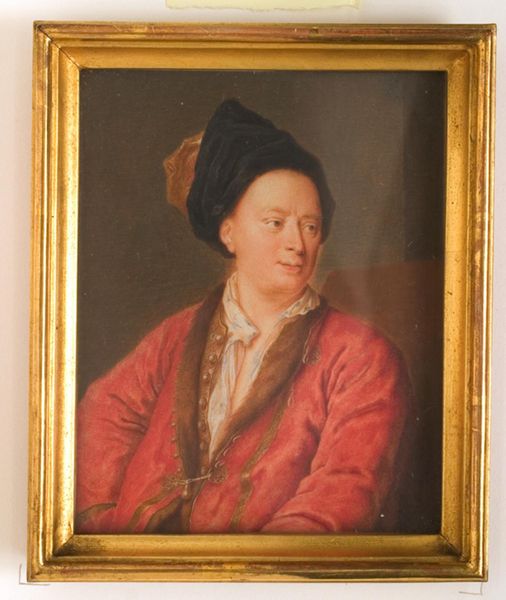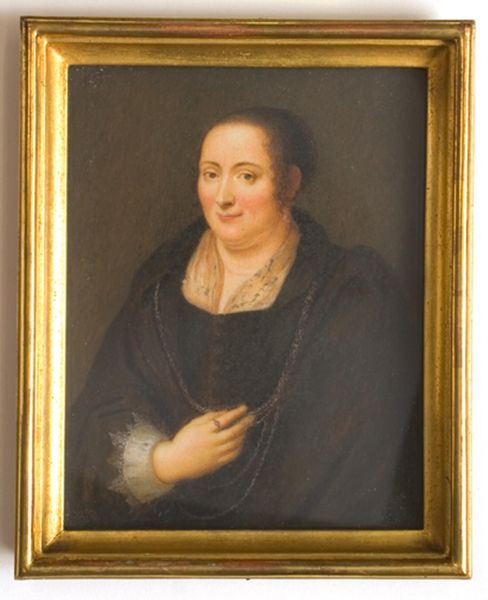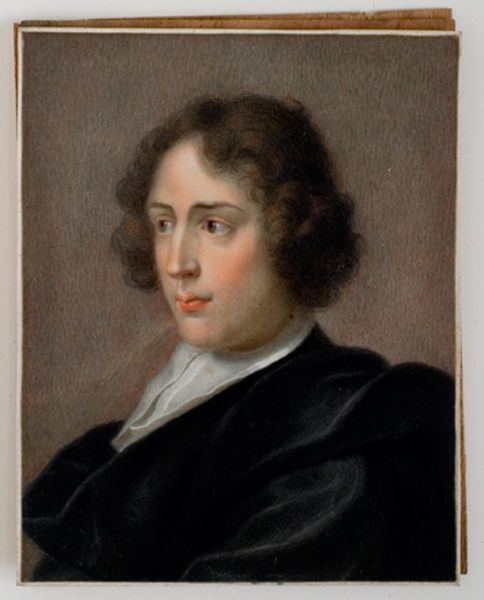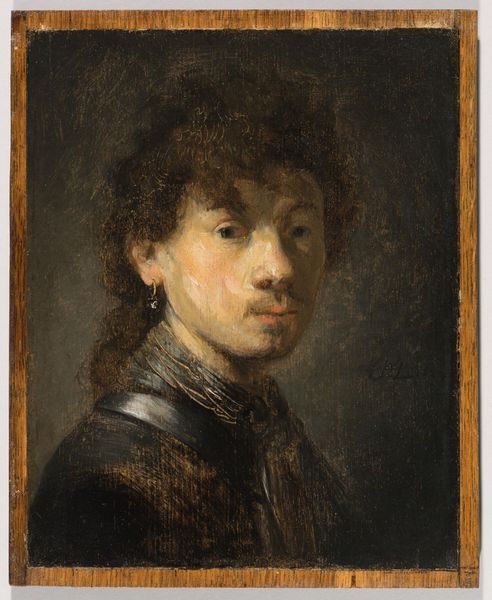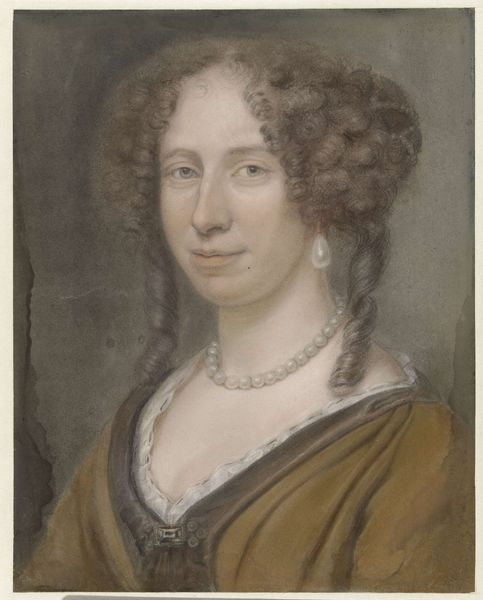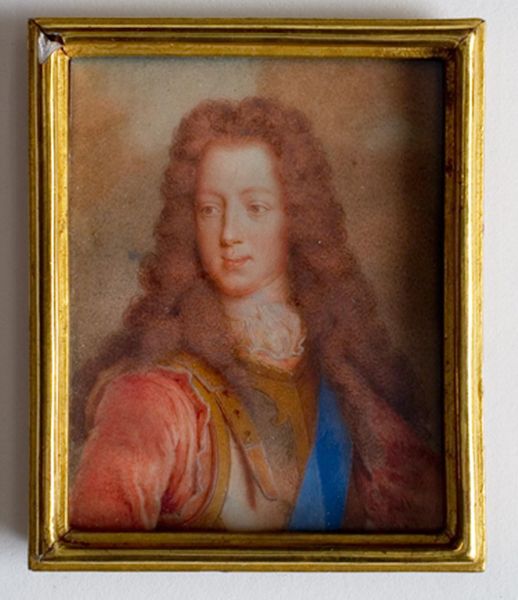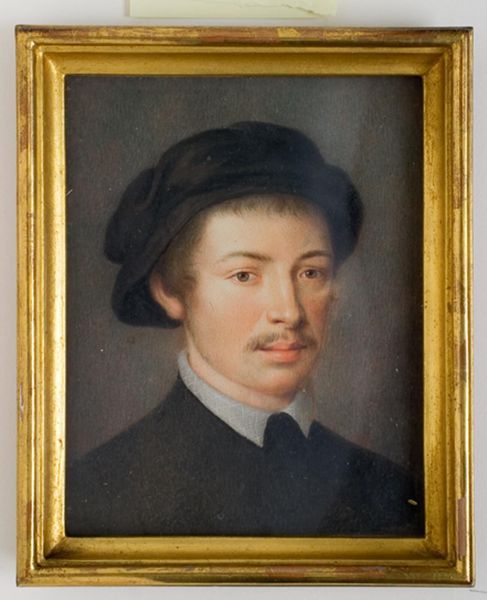
painting, oil-paint
#
portrait
#
portrait
#
painting
#
oil-paint
#
form
#
rococo
Dimensions: 11.6 cm (height) x 9.3 cm (width) (Netto)
Editor: This is "Ung mand," or "Young Man," an oil painting from sometime between 1726 and 1748. The museum attributes it to David Gardelle. The thing that strikes me most is its intimacy; it feels like a stolen glance. What catches your eye? Curator: The interesting thing is thinking about portraits like this within the context of 18th-century society. This wasn't just about capturing a likeness; it was a statement of social standing, of identity being crafted and consumed by the public. A portrait of a young man wasn't simply about the individual; it was about the family and their aspirations. Editor: So it was almost a form of advertisement? Curator: Exactly. Consider the soft lighting, typical of Rococo, designed to flatter, to idealize. Gardelle would have been deeply aware of how this image would be received, not just by the sitter but by the wider social circle. What do you think this "Young Man" represents? What message is he trying to convey? Editor: I guess he's not conveying a lot. There's a quiet thoughtfulness about him... the subtle turning of his head away from the viewer. It doesn't project a lot of confidence. Curator: Perhaps. Or maybe that 'un-confidence' itself is a carefully constructed image, a way to signal sensitivity and intellectual depth. Think about the politics of dress; the loosely buttoned shirt. Nothing is accidental. He’s crafting a carefully curated identity for public viewing. It would be worth researching more about his patronage and whether or not this portrait supported or contrasted pre-existing messaging. Editor: I see. The artist and the subject were working together to create an image that would fit within the social and political landscape. I hadn’t really thought of it that way before. Curator: Right? It is so interesting when looking at these early works from the rococo era through this new framework.
Comments
No comments
Be the first to comment and join the conversation on the ultimate creative platform.

